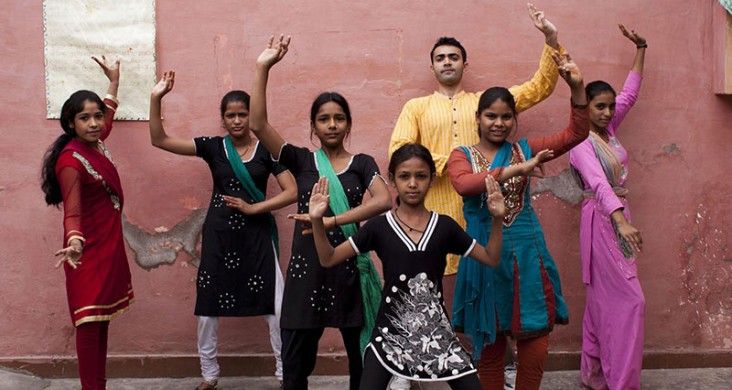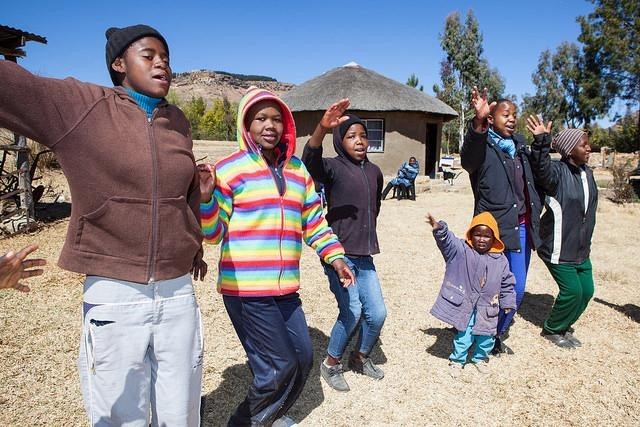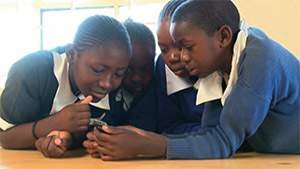- What We Do
- Agriculture and Food Security
- Democracy, Human Rights and Governance
- Economic Growth and Trade
- Education
- Environment and Global Climate Change
- Gender Equality and Women's Empowerment
- Global Health
- Humanitarian Assistance
- Transformation at USAID
- Water and Sanitation
- Working in Crises and Conflict
- U.S. Global Development Lab
Speeches Shim

HIV Infection among Youth
Around the world, young people ages 15–25 account for more than 30 percent of new HIV infections. In sub-Saharan Africa, young women 15–24 account for 25 percent of all new HIV infections among adults.
Despite these startling statistics, youth are often an underserved and neglected age group for HIV/AIDS efforts globally. Reaching people with HIV prevention services when they are young – and before they have established practices that increase their risk of HIV infection – is an essential step. Earlier diagnosis and linkages of HIV-positive youth to care and treatment improves their quality of life and reduces their risk of passing the virus onto others.
USAID’S Response

The U.S. Agency for International Development (USAID) is committed to working with the global health community to control the HIV/AIDS epidemic. USAID’s work is guided by the USAID Youth in Development Policy [PDF, 1.4MB]. The policy’s goal is to improve youths’ capacities and enable their aspirations, so they can contribute to and benefit from more stable, democratic and prosperous communities and nations. U.S. President’s Emergency Plan for AIDS Relief (PEPFAR) programming aligns with the Youth in Development Policy, recognizing the need for countries to focus their youth programming based on the cultural, epidemiological and context-specific circumstances of their countries. The policy maintains the need to consider more integrated and cross-sectoral programming to meet the holistic needs of youth.
Recent Programmatic Highlights

DREAMS
The DREAMS (Determined, Resilient, Empowered, AIDS-free, Mentored and Safe) partnership is an ambitious public-private partnership to reduce rates of HIV among adolescent girls and young women (AGYW) in the highest HIV burden countries. In 2015, 10 DREAMS countries in sub-Saharan Africa, including Kenya, Lesotho, Malawi, Mozambique, South Africa, Swaziland, Tanzania, Uganda, Zambia and Zimbabwe, accounted for nearly half of all the new HIV infections that occurred among AGYW globally. Discover the 2018 World AIDS Day results for DREAMS announced here.
YouthPower
YouthPower is a USAID project that strengthens local, national and global systems to achieve sustainable, positive youth outcomes in health, education and political and economic empowerment. YouthPower supports cross-sectoral, positive youth development investments, which empower youth to reach their full potential. The project consists of two complementary contracts: YouthPower: Implementation and YouthPower: Evidence and Evaluation.
Additional USAID-funded Youth-related Activities
Adolescent Research
The International AIDS Vaccine Initiative (IAVI) researches adolescent-friendly services at clinical research centers in eastern and southern Africa to increase the enrollment of adolescents in HIV vaccine studies.
Enhance Demand and Backing of HIV Biomedical Prevention Research and Development from Civil Society, Communities, Policy Makers and Other Key Stakeholders
AVAC, a USAID partner, focuses on adolescent-focused advocacy capacity building as part of the Africa Advocacy Network agenda, including an advisory group of adolescent girls and young women in country and regional advocacy coalitions regarding biomedical HIV prevention options.
Job Demand/ Market Analysis to Inform AGYW PEPFAR Programming
The ASPIRES project will develop and pilot test demand-driven youth employment and small business development programs that place adolescent girls and young women in jobs or self-employment, building on a comprehensive job demand market analysis in one or more DREAMS countries.
Transitioning Adolescents to HIV Self-management in Zambia
Project SOAR (Supporting Operational AIDS Research) is a study that responds to challenges with adolescents' poor adherence to ART and addresses evidence gaps by refining and testing a peer-mentoring strategy in Zambia to strengthen the capacity of health systems and families to support youth as they transition to, and engage in, self-management and adult HIV care and treatment.
Zimbabwe Linkage to Care and Retention Strategies in Children and Adolescents
The Linkage to Care and Retention Strategies in Children and Adolescents is an AIDSFree activity that develops guidance to decrease loss to follow-up among adolescents living with HIV.
Resources
- Best Practices for Adolescent- and Youth-Friendly HIV Services – A Compendium of Selected Projects in PEPFAR-Supported Countries
- DREAM Again- Overview video of the DREAMS program in Zimbabwe
- Pediatric and Youth Disclosure Materials – Available in English, French, Xhosa, and Portuguese.
- Promoting Partner Reduction: Helping Young People Understand and Avoid HIV Risks from Multiple Partnerships [PDF, 21.2MB]
- Systematic Review of Positive Youth Development in Low- and Middle-Income Countries
- Toolkit: Transitioning of Care and Other Services for Adolescents Living with HIV [PDF, 1.8MB]
- YouthPower Website
- YouthPower Action: Key Soft Skills for Cross Sectoral Youth Outcomes
The following guides are recommended to be used together:

Comment
Make a general inquiry or suggest an improvement.